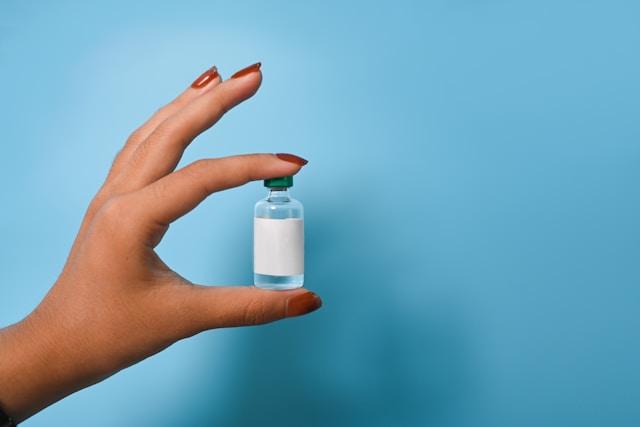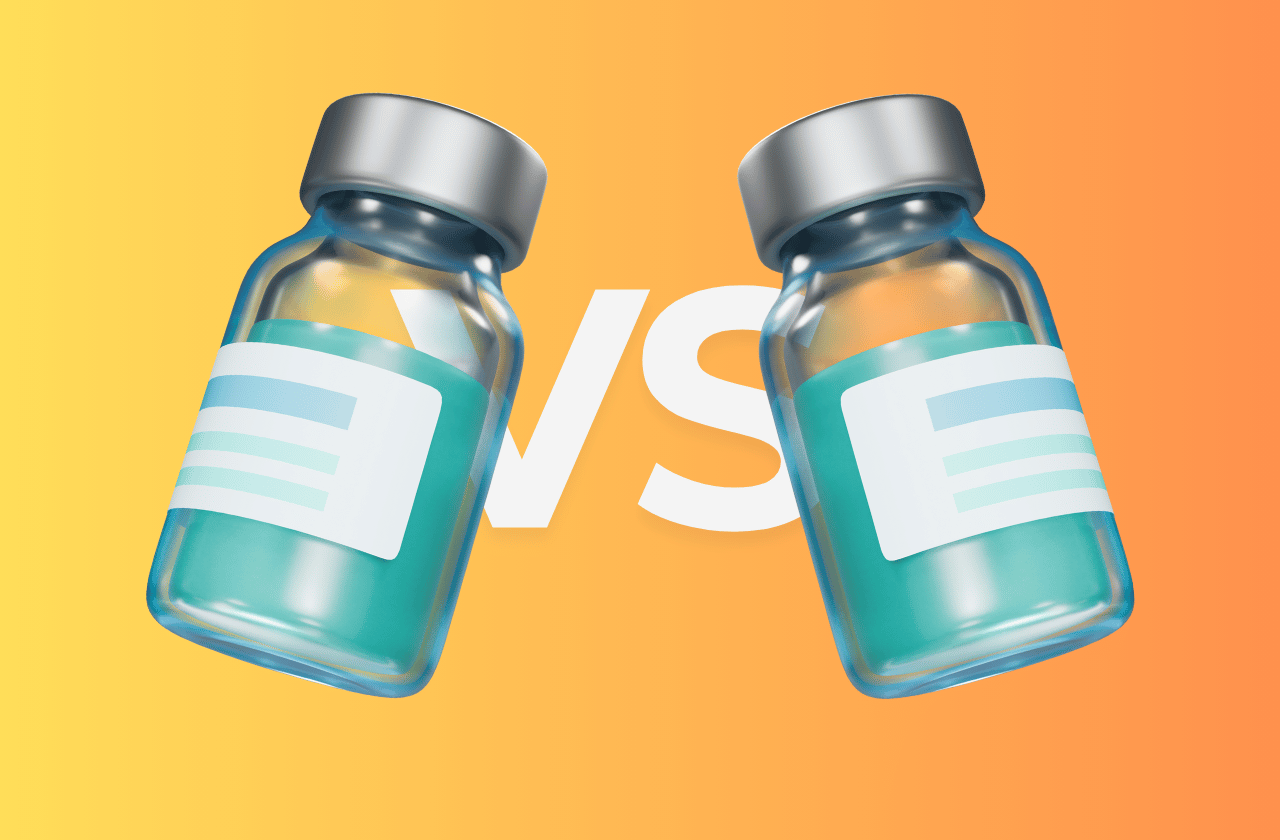[Disclaimer: This article is for informational purposes only and does not constitute medical advice. Always consult with a qualified healthcare provider before starting any peptide therapy.]
Imagine your brain has its own postal service, with tiny molecular messengers delivering important packages to different neighborhoods. That’s essentially what peptides do.
Peptides are short chains of amino acids that act as natural communication tools in your brain, helping improve mental clarity and cognitive performance.
The world of brain enhancement has been completely transformed by these therapeutic peptides. Compared to standard treatments, peptides may offer alternatives for mental performance that work with your body’s existing systems.
This article examines the best peptides for brain health, diving deep into the compounds that have shown real clinical promise for cognitive enhancement.
Key Takeaways
- Semax and dairy-derived GTWY peptides have the strongest human clinical evidence
- Food-based peptides offer the safest entry point for most people
- Newer compounds like Dihexa show promise but lack human safety data
- Medical supervision is essential for prescription peptides like Semax and Selank
- Basic brain health habits remain more important than any supplement
Synthetic Neuropeptides: The Clinical Leaders
Let’s start with the heavy hitters—synthetic peptides that have been rigorously tested in clinical trials and have real scientific backing. These nootropic compounds work by directly modulating your brain’s chemistry in targeted ways.
Semax
Semax is the star player in the peptide world—it’s been studied more than any other cognitive peptide and has real clinical results to back it up. Originally developed from a naturally occurring hormone, this synthetic compound has been helping people with brain trauma, strokes, and memory issues for decades in Russia and Eastern Europe.
How Does Semax Actually Work?
Think of Semax as a master electrician for your brain. It flips multiple switches at once:
- Boosts neurotransmitters by stopping enzymes that normally break them down
- Activates special brain receptors that help with memory and focus
- Protects brain cells from damage and stress
The Clinical Evidence Is Pretty Amazing
Here’s what the research shows:
| Study Details | Results |
|---|---|
| 1996 Workplace Study | 250-1000 μg improved attention and memory during 8-hour work shifts[1] |
| Memory Test Performance | 71% correct responses vs. 41% in control group[1] |
| Duration of Effects | Benefits lasted into the next day[1] |
| Stroke Recovery | Increased BDNF levels and better rehabilitation outcomes[2] |
The results were especially impressive when people were mentally tired—exactly when you need cognitive support the most.
What About Long-term Brain Health?
Semax isn’t just about quick fixes. Research shows it:
- Protects against stress damage by changing gene expression in your hippocampus (your brain’s memory center)
- Improves brain connectivity by enhancing your default mode network
- Acts like fertilizer for brain cells by boosting BDNF (brain-derived neurotrophic factor)
Selank
Selank is like having a chill, super-smart friend who helps you stay calm while making you sharper. Unlike typical anxiety medications that can make you foggy, Selank actually improves your thinking while reducing stress.
How Selank Creates This Magic Balance
Selank works by fine-tuning your brain chemistry:
- Enhances GABA activity (your brain’s natural chill-out system)
- Boosts dopamine and serotonin (the feel-good, motivation chemicals)
- Reduces stress response without making you sleepy
Think of GABA as your brain’s brake pedal—Selank helps this system work smoothly so you can stay calm but alert.
What the Research Shows
Scientists at the Institute of Molecular Genetics in Russia found that Selank effectively reduces anxiety symptoms[3] in people with:
- Generalized anxiety disorder
- Post-traumatic stress disorder
- Everyday stress and overwhelm
Cognitive Benefits You’ll Notice:
- Better short and long-term memory
- Improved focus that lasts longer
- Enhanced learning ability
- Better emotional control during stressful situations
- Increased brain flexibility (neuroplasticity)
Animal studies confirm that Selank helps with learning and memory while supporting the brain’s ability to form new connections—especially beneficial as we age.
Growth Factor Modulators: Building New Brain Connections

These peptides are like construction crews for your brain—they help build new neural pathways and strengthen existing connections.
Dihexa
Important Disclaimer: Dihexa has only been tested in laboratory and animal studies—there are no human clinical trials yet. While the research is exciting, we must be honest about what we don’t know.
What Laboratory Research Shows:
Dihexa appears to be extraordinarily potent in lab studies, potentially seven times more powerful than natural brain growth factors for creating neural connections[4]. However, lab results don’t always translate to real-world human benefits.
The Science Behind the Potential:
In laboratory settings, Dihexa:
- Crosses the blood-brain barrier in animal models
- Can be given orally (no injections needed)
- Activates growth pathways that promote brain connections
- Shows promise for brain repair after injuries
What We Don’t Know Yet:
- Human safety profile (no human trials completed)
- Effective human dosing (animal doses may not translate)
- Long-term effects in humans
- Real-world cognitive benefits in healthy people
- Potential side effects or interactions
Bottom Line: While Dihexa’s laboratory results are impressive, it remains an experimental compound. Anyone considering it should understand they would essentially be participating in an uncontrolled experiment.
Third-Party Tested, 99% Purity
Order lab-verified peptides from our top recommended vendor.

BDNF-Derived Peptides
BDNF (Brain-Derived Neurotrophic Factor) is like premium fertilizer for your brain cells. When your BDNF levels are low, you’re at higher risk for Alzheimer’s, Parkinson’s, and depression.
The problem? Full-size BDNF can’t easily get into your brain.
The Solution: BDNF Peptides
Scientists have created smaller, targeted pieces of BDNF that:
- Are smaller and more stable than the full protein
- Can actually reach your brain
- Keep the beneficial effects without the problems
- Show non-toxic profiles in research
What Research Reveals:
Studies show that BDNF-derived peptides[5]:
- Turn on neurotrophin receptors (brain growth signals)
- Promote brain cell survival and new growth
- Stimulate neurogenesis (birth of new brain cells)
- Work safely in brain cell cultures
Important Discovery:
Research has revealed something crucial—not all parts of BDNF are helpful. Some fragments can actually harm brain function. That’s why targeting specific BDNF domains (rather than using the whole protein) is so important for safe, effective treatment.
Nutritional Approaches: Dairy-Derived Cognitive Peptides

Here’s some great news—you can actually support your brain through what you eat! These peptides come from everyday dairy products and offer a natural, accessible way to boost cognitive function.
GTWY Peptide
GTWY peptide comes from whey protein (yes, the same stuff in protein shakes!). What makes this exciting is that it represents a natural, food-based approach to boosting your brain power.
The Clinical Evidence Is Solid
This isn’t just theory—researchers conducted a gold-standard study with real people[6]:
| Study Details | Participants | Duration | Results |
|---|---|---|---|
| Randomized, Double-Blind Study | 114 healthy adults (ages 50-75) | 12 weeks | Significant cognitive improvements |
| Focus Areas | Memory, attention, learning | Daily supplementation | Enhanced frontal cortex activity |
| Memory Tests | Verbal fluency, Stroop tests | 6 weeks | Better attention and executive function |
How GTWY Works in Your Brain:
The magic happens through your dopamine system:
- Increases dopamine levels in your hippocampus (memory center)
- Improves dopamine efficiency by reducing wasteful breakdown
- Enhances memory retrieval and learning ability
- Boosts attention and focus, especially when you’re tired
Real-World Benefits You Might Notice:
- Better performance on memory tasks
- Improved attention control
- Enhanced learning and recall
- Less mental fatigue during challenging cognitive work
- Better associative memory (connecting ideas and concepts)
The study found that just 1 gram of GTWY-rich whey peptide for six weeks improved memory retrieval, attention, and executive function—with the biggest benefits seen in people experiencing mental fatigue[6].
WY Dipeptide
WY dipeptide is like GTWY’s simpler cousin—it contains the core active ingredients (tryptophan-tyrosine) that provide the memory benefits. Sometimes simpler is better!
Why WY Dipeptide Is Appealing:
- Smaller size means better absorption
- Crosses the blood-brain barrier more easily
- Contains the essential active components
- Works through the same dopamine pathways
Research Findings:
Studies show that oral WY dipeptide[7] effectively:
- Improves memory functions through dopamine modulation
- Enhances spatial memory performance in research models
- Offers potential for human cognitive enhancement
- Provides efficient brain penetration due to its small size
The Bottom Line: WY dipeptide gives you the core benefits in a more concentrated, easily absorbed form.
Neuroprotective Peptides: Your Brain’s Security Team

Think of these peptides as your brain’s personal bodyguards—they protect against damage, reduce inflammation, and help with recovery from injuries.
CN-105
CN-105 was specifically designed to solve a frustrating problem—many protective proteins can’t actually reach your brain because they’re too big to cross the blood-brain barrier. CN-105 is small enough to get through while keeping all the protective benefits.
What Makes CN-105 Special:
- Crosses the blood-brain barrier easily
- Reduces brain inflammation after injuries
- Supports functional recovery from trauma
- Provides long-lasting benefits
Research Results:
Studies using brain injury models show that CN-105 treatment[8] produces:
- Durable improvements in functional outcomes
- Reduced neuroinflammation (brain swelling and irritation)
- Better performance on motor and cognitive tests
- Enhanced neural repair processes
How It Works:
CN-105 mimics the protective actions of a larger protein called apolipoprotein E, but in a form that can actually reach your brain. It works by:
- Calming down overactive immune cells in the brain
- Reducing inflammatory chemical release
- Supporting the brain’s natural repair mechanisms
EDR Peptide
EDR peptide is particularly exciting for anyone concerned about Alzheimer’s disease or age-related cognitive decline. This tiny three-amino-acid compound packs a powerful protective punch.
What EDR Peptide Does:
- Activates protective genes that keep brain cells healthy
- Reduces brain cell death (apoptosis)
- Protects dendritic spines (the connection points between brain cells)
- Boosts antioxidant enzymes to fight damaging free radicals
Research Highlights:
Studies show that EDR peptide interferes with the elimination of dendritic spines in brain cell cultures from mice with Alzheimer’s and Huntington’s diseases[9]. This is huge because maintaining these connections is crucial for supporting brain health and cognitive function.
How It Protects Your Brain:
- Gene regulation: Turns on protective genes and turns off harmful ones
- Antioxidant boost: Increases your brain’s natural defense against oxidative stress
- Connection preservation: Helps maintain the physical structures needed for memory
- Cell survival support: Keeps brain cells alive and functioning longer
Who Should Consider EDR Peptide:
- Anyone with family history of Alzheimer’s or dementia
- People experiencing age-related memory concerns
- Those wanting to proactively protect brain health
- Individuals dealing with high levels of oxidative stress
Safety and Clinical Evidence: What You Need to Know
Before diving into any cognitive enhancement strategy, you want to know it’s both effective and safe. Here’s the real deal on peptide safety and which ones have the strongest scientific backing.
Which Peptides Have the Best Human Evidence?
Here’s the truth: not all peptides are created equal when it comes to human research. Some have solid clinical trials, while others are still in early stages.
The Evidence Breakdown:
| Peptide | Clinical Evidence | Study Quality | Important Notes |
|---|---|---|---|
| Semax | Multiple randomized trials | High | Prescription drug in some countries only |
| GTWY (Whey Peptides) | 12-week RCT with 114 people | High | Available as nutritional supplements |
| Selank | Clinical studies for anxiety | Moderate | Limited to specific regions |
| Dihexa | Preclinical only | Early stage | No human safety data yet |
Critical Safety Considerations:
- Semax and Selank require medical supervision in countries where they’re regulated
- Dairy-derived peptides like GTWY are the safest option for most people
- Research compounds like Dihexa lack human safety data
- Always consult healthcare providers before starting any peptide regimen
What This Means for You:
- Start with food-based options like whey-derived GTWY peptides
- Work with qualified healthcare providers for prescription peptides
- Be extremely cautious with research compounds that lack human trials
- Avoid unregulated sources that may have quality control issues
Semax Safety Profile:
Semax has been included on Russia’s official list of vital and essential drugs, indicating:
- Long-term safety data from clinical use
- Consistent benefits across multiple studies
- Effects ranging from acute cognitive boost to stroke recovery support
- Well-established safety profile through extensive real-world use
GTWY Peptide Safety:
GTWY-rich whey peptides offer excellent safety because:
- They come from food sources (dairy)
- 12-week human studies show no adverse effects
- Comprehensive neuropsychological testing confirms real-world benefits
- Natural nutritional origin supports long-term use
Overall Safety Compared to Traditional Drugs

Here’s some really good news: peptides generally have much better safety profiles than traditional pharmaceutical drugs. Why? Because they’re similar to molecules your body already makes and uses.
Peptide Safety Advantages:
- Natural similarity: Work with your body’s existing systems
- No dependency: Unlike benzodiazepines, peptides like Selank don’t cause addiction
- No withdrawal: You can stop using them without withdrawal symptoms
- Fewer side effects: Generally milder and more tolerable than pharmaceuticals
- Multi-target benefits: Often improve multiple aspects of brain function simultaneously
Important Regulatory Reality Check:
Here’s where things get complicated—and where you need to be very careful:
Legal Status by Region:
- Russia/Eastern Europe: Semax and Selank are approved prescription medications requiring medical supervision
- United States/Canada/EU: These compounds are typically unregulated research chemicals
- Dairy peptides: Generally available as nutritional supplements worldwide
- Quality control: Unregulated sources may have purity and dosing issues
What This Means for Your Safety:
The regulatory disparity doesn’t necessarily reflect safety—it often reflects where research was conducted and which agencies have reviewed the data. However, this creates real practical challenges:
- Prescription peptides should only be used under medical supervision
- Research chemicals lack quality control and standardized dosing
- Self-experimentation carries unknown risks
- Drug interactions haven’t been fully studied for most peptides
Responsible Approach:
- Start with evidence-based, food-derived options like GTWY peptides
- Consult qualified healthcare providers before considering prescription peptides
- Avoid research chemicals without human safety data
- Be skeptical of dramatic claims not backed by peer-reviewed human studies profiles compared to traditional pharmaceutical interventions, likely due to their similarity to naturally occurring biological molecules. Selank, for example, provides anxiolytic effects without the sedation associated with benzodiazepines and without dependency or withdrawal symptoms.
However, regulatory status varies significantly between peptides and geographical regions. While compounds like Semax are approved prescription medications in Russia and Eastern Europe, they remain unregulated research compounds in most other countries.
The Future of Peptide Therapy: Exciting but Proceed Carefully
The field of cognitive enhancement peptides is evolving rapidly, with promising developments on the horizon. However, it’s important to balance optimism with scientific caution.
Combination Therapies
Emerging research suggests that combining multiple peptides or integrating peptide therapy with other cognitive enhancement strategies may provide synergistic benefits. Combinations might include neuroprotective peptides like CN-105 with growth factor modulators like Dihexa, or anxiolytic peptides like Selank with memory-enhancing compounds like GTWY.
Integration with lifestyle interventions including targeted nutrition, exercise protocols, and sleep optimization may further enhance peptide efficacy. This holistic approach recognizes that cognitive function depends on multiple physiological systems and that peptides work best within the context of optimal overall health.
Technological Advances
Future developments in peptide therapy will likely focus on improved delivery methods that enhance bioavailability and target specificity. Innovations in blood-brain barrier penetration, extended-release formulations, and targeted delivery systems could significantly improve therapeutic outcomes.
The development of personalized peptide protocols based on individual genetic profiles, biomarker assessments, and cognitive testing results represents another promising direction. This precision medicine approach could optimize therapeutic outcomes while minimizing side effects and unnecessary interventions.
A Balanced Perspective on Peptides for Brain Health
The field of cognitive enhancement peptides has made remarkable progress, offering both proven options and exciting possibilities for the future. However, it’s crucial to approach this field with both optimism and scientific caution.
What We Know Works:
- Semax and Selank have solid clinical validation but require medical supervision where regulated
- GTWY and dairy-derived peptides offer the safest, most accessible approach through nutrition
- Neuroprotective peptides like EDR show promise for long-term brain health
What’s Still Developing:
- Newer compounds like Dihexa need human clinical trials before we can recommend them
- Optimal dosing and combinations require more research
- Long-term effects of most peptides aren’t fully understood
- Individual variations in response need more study
The Responsible Approach:
If you’re interested in cognitive enhancement peptides, consider this hierarchy:
- Start with nutrition: GTWY-rich whey proteins offer proven benefits with excellent safety
- Consult healthcare providers: For prescription peptides like Semax or Selank
- Stay informed: Follow legitimate research developments
- Avoid experimental compounds: Until human safety data is available
- Be patient: Good science takes time, and your brain health is worth waiting for quality evidence
The Bigger Picture:
Peptides represent a promising frontier that works with your body’s natural systems rather than against them. The diversity of mechanisms—from neurotransmitter optimization to growth factor enhancement—provides multiple avenues for supporting cognitive function throughout life.
However, the most important factor in cognitive health remains the basics: quality sleep, regular exercise, good nutrition, stress management, and lifelong learning. Peptides should complement, not replace, these fundamental practices.
Moving Forward:
As research continues and regulatory frameworks develop, we’ll likely see more peptide options become available with proper safety oversight. Until then, the wisest approach is to focus on evidence-based options while staying curious about developments in this exciting field.
Remember: your brain is incredibly valuable, and any intervention should be based on solid science and appropriate medical guidance. The goal isn’t just to enhance cognitive function—it’s to support long-term brain health and overall well-being throughout your life.
References
- Kaplan, A., Kochetova, A., Nezavibathko, V., Rjasina, T., & Ashmarin, I. (1996). SYNTHETIC ACTH ANALOGUE SEMAX DISPLAYS NOOTROPIC-LIKE ACTIVITY IN HUMANS. Neuroscience Research Communications, 19, 115-123. https://doi.org/10.1002/(SICI)1520-6769(199609)19:2<115::AID-NRC171>3.0.CO;2-B.
- Gusev, E. I., Martynov, M. Y., Kostenko, E. V., Petrova, L. V., & Bobyreva, S. N. (2018). Éffektivnost’ semaksa pri lechenii bol’nykh na raznykh stadiiakh ishemicheskogo insul’ta [The efficacy of semax in the tretament of patients at different stages of ischemic stroke]. Zhurnal nevrologii i psikhiatrii imeni S.S. Korsakova, 118(3. Vyp. 2), 61–68. https://doi.org/10.17116/jnevro20181183261-68.
- Kasian, A., Kolomin, T., Andreeva, L., Bondarenko, E., Myasoedov, N., Slominsky, P., & Shadrina, M. (2017). Peptide Selank Enhances the Effect of Diazepam in Reducing Anxiety in Unpredictable Chronic Mild Stress Conditions in Rats. Behavioural neurology, 2017, 5091027. https://doi.org/10.1155/2017/5091027.
- Weiss, J. B., Phillips, C. J., Malin, E. W., Gorantla, V. S., Harding, J. W., & Salgar, S. K. (2021). Stem cell, Granulocyte-Colony Stimulating Factor and/or Dihexa to promote limb function recovery in a rat sciatic nerve damage-repair model: Experimental animal studies. Annals of medicine and surgery (2012), 71, 102917. https://doi.org/10.1016/j.amsu.2021.102917.
- Cardenas-Aguayo, M.delC., Kazim, S. F., Grundke-Iqbal, I., & Iqbal, K. (2013). Neurogenic and neurotrophic effects of BDNF peptides in mouse hippocampal primary neuronal cell cultures. PloS one, 8(1), e53596. https://doi.org/10.1371/journal.pone.0053596.
- Kita, M., Kobayashi, K., Obara, K., Koikeda, T., Umeda, S., & Ano, Y. (2019). Supplementation With Whey Peptide Rich in β-Lactolin Improves Cognitive Performance in Healthy Older Adults: A Randomized, Double-Blind, Placebo-Controlled Study. Frontiers in neuroscience, 13, 399. https://doi.org/10.3389/fnins.2019.00399.
- Ano, Y., Ayabe, T., Ohya, R., Kondo, K., Kitaoka, S., & Furuyashiki, T. (2019). Tryptophan-Tyrosine Dipeptide, the Core Sequence of β-Lactolin, Improves Memory by Modulating the Dopamine System. Nutrients, 11(2), 348. https://doi.org/10.3390/nu11020348.
- Laskowitz, D. T., Wang, H., Chen, T., Lubkin, D. T., Cantillana, V., Tu, T. M., Kernagis, D., Zhou, G., Macy, G., Kolls, B. J., & Dawson, H. N. (2017). Neuroprotective pentapeptide CN-105 is associated with reduced sterile inflammation and improved functional outcomes in a traumatic brain injury murine model. Scientific reports, 7, 46461. https://doi.org/10.1038/srep46461.
- Khavinson, V., Linkova, N., Kozhevnikova, E., & Trofimova, S. (2020). EDR Peptide: Possible Mechanism of Gene Expression and Protein Synthesis Regulation Involved in the Pathogenesis of Alzheimer’s Disease. Molecules (Basel, Switzerland), 26(1), 159. https://doi.org/10.3390/molecules26010159.








